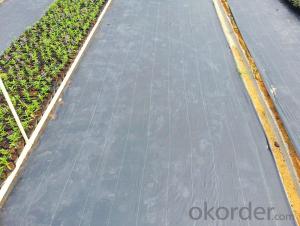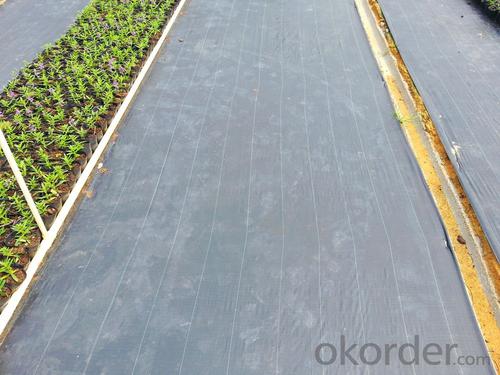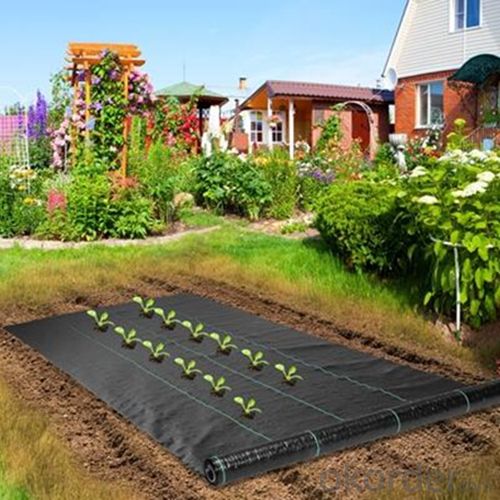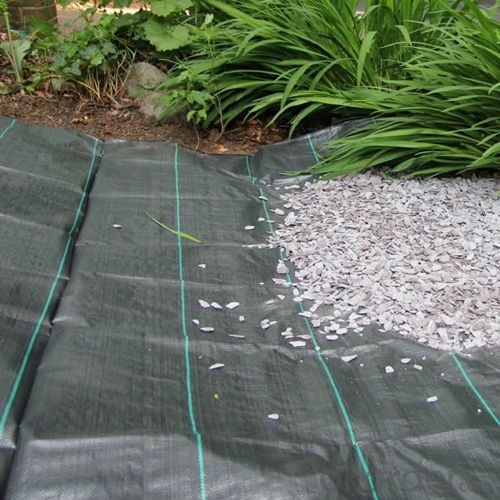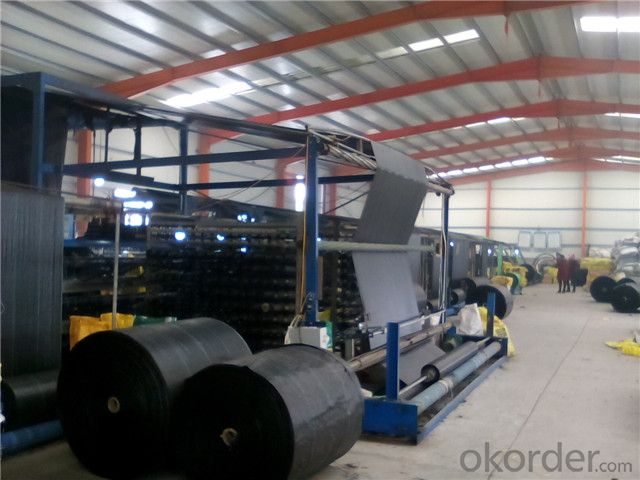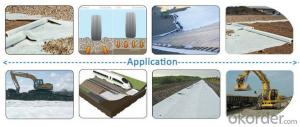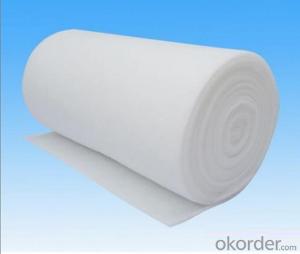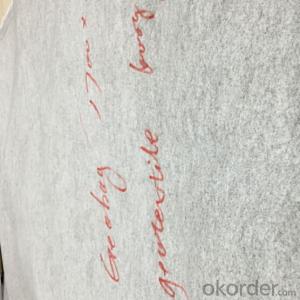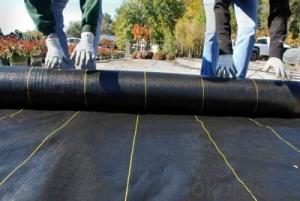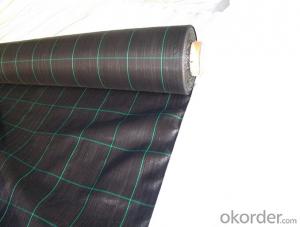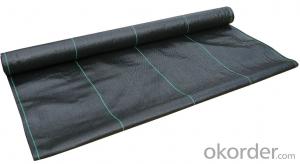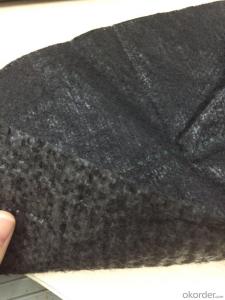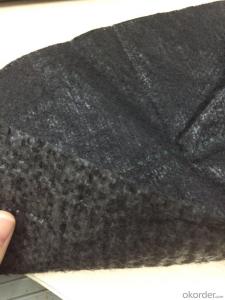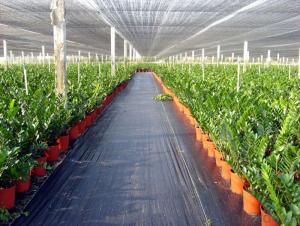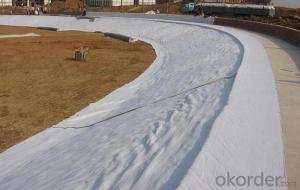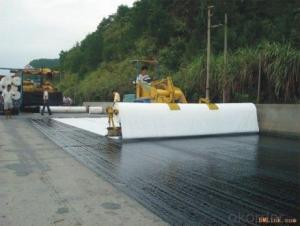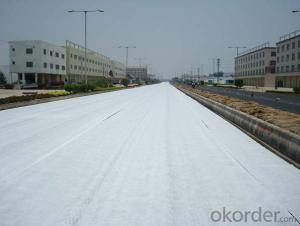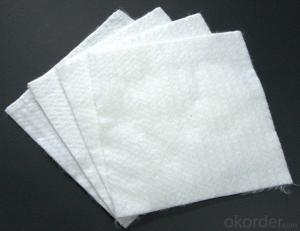Geotextile Edmonton Anti Weed Barrier Fabric/Mat Woven Geotextile
- Loading Port:
- China main port
- Payment Terms:
- TT or LC
- Min Order Qty:
- 1000 m²
- Supply Capability:
- 10000 m²/month
OKorder Service Pledge
OKorder Financial Service
You Might Also Like
1. Anti Weed Barrier Fabric Description:
Anti Weed Barrier Fabric is made of environmentally friendly raw materials, pp woven fabric. It used to prevent the growth of weed,
without the use of potentially dangerous chemical sprays or labor intensive hoeing. They are permeable fabrics, which allow air, water and nutrients to pass through, and designed to block out the sun to reduce
photosynthesis and stop weed growth.

2. Anti Weed Barrier Fabric Specification:
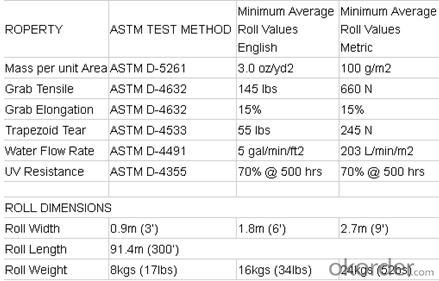
3. Anti Weed Barrier Fabric Functions and Features:
1)Excellent weed control
2)Excellent UV resistance
3)Moisture,fertilizers,air reach plants to allow for healthy soil
4)Good water and air permeability
5)Exceptional toughness and strength
6)Durable,tear-resistant,anti-rot and anti-mildew
7)Light weight,easy to install,follows natural ground contours
8)Ideal for use in landscaped beds,under decks and walkways
9)Fashionable design,high quality,competitive price
10)Long service life
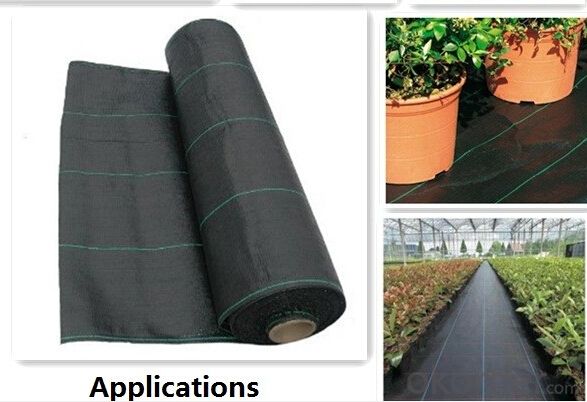
4. Anti Weed Barrier Fabric Property:
1) Light weight, high strength, low elongation, easy to construct.
2) Reinforcement, separation, drainage and filtration, fencing function, etc.
5. Anti Weed Barrier Fabric Application:
It can be widely used in areas of railways, highways, sport fields, earthwork, etc.
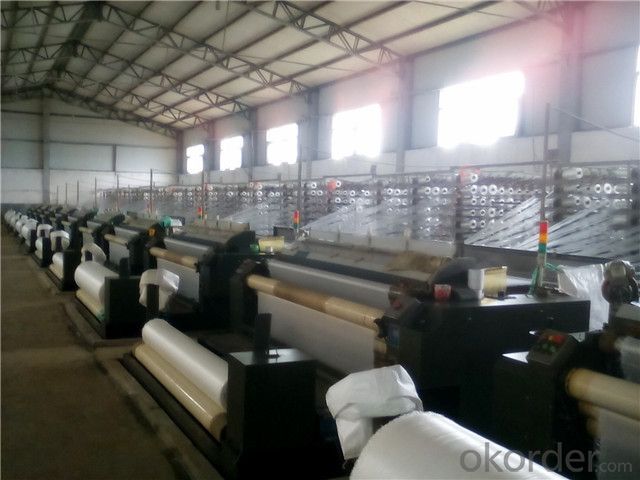
6. FAQ:
Q1:Can you send samples to us ?
A1:Yes , free samples could be provided , but customer need pay for the freight cost . After order placed , the freight charge could be refund .
Q2:What’s your Payment term ?
A2:T/T , L/C , Western Union,Paypal ...
Q3:What’s your manufacture process time ?
A3:Usually within 20 days
- Q: Can geotextiles be used in green space development projects?
- Yes, geotextiles can be used in green space development projects. Geotextiles can help with erosion control, soil stabilization, and drainage management, which are crucial aspects of creating and maintaining green spaces. They can be used to prevent soil erosion, promote healthy root growth, and improve water infiltration, ultimately enhancing the overall sustainability and functionality of green spaces.
- Q: How do geotextiles help with stabilization of railway tracks?
- Geotextiles aid in the stabilization of railway tracks by providing additional support, preventing the displacement of ballast, and reducing the risk of track deformations caused by settlement or erosion.
- Q: What are the benefits of using geotextiles in construction projects?
- Geotextiles offer several benefits in construction projects. Firstly, they provide effective erosion control by stabilizing soil and preventing sediment movement, helping to maintain the integrity of embankments and slopes. Additionally, geotextiles act as a barrier against weed growth, minimizing maintenance efforts. They also enhance drainage and filtration systems, improving the overall performance of infrastructure projects. Furthermore, geotextiles can be used as reinforcement materials, providing strength and stability to various construction components like roads, retaining walls, and foundations. Overall, the use of geotextiles in construction projects offers cost-effective and environmentally friendly solutions for a range of engineering challenges.
- Q: What are the specifications for geotextiles in roadways?
- Geotextiles used in roadways typically have specific specifications, including high tensile strength, puncture resistance, and durability to withstand heavy traffic loads. They are often made from synthetic materials like polypropylene or polyester, with a minimum weight per unit area to ensure sufficient strength and stability. Additionally, geotextiles for roadways should have proper drainage capabilities to prevent water buildup and promote better road performance.
- Q: What is the filament single-sided singeing geotextile
- Filament single-sided singeing geotextile is through a series of hot-rolling process will filament geotextile side of the filament fiber roll hot filament geotextile surface of the unity, thereby increasing the filament geotextile non-slip, anti- Tear resistance. Filament singeing geotextile is generally used for landfill, tailings and other projects with rough surface geomembrane with the use of friction coefficient to increase and improve anti-skid performance. Filament single-sided singeing geotextile is the first production of finished filament geotextile, and then through the professional equipment for single-sided singeing.
- Q: Are geotextiles suitable for use in gabion walls?
- Yes, geotextiles are suitable for use in gabion walls. They can be used as a filter fabric to prevent soil erosion and improve drainage within the gabion structure. Additionally, geotextiles help to separate different layers of materials, preventing mixing and maintaining the stability of the gabion wall.
- Q: Can geotextiles be used in mine tailings management?
- Yes, geotextiles can be effectively used in mine tailings management. Geotextiles can provide several benefits in this context, such as preventing erosion, enhancing drainage, and promoting vegetation growth. They can act as a barrier to prevent the spread of contaminants, reduce sedimentation, and provide stability to mine tailings piles. By effectively controlling the movement of water and promoting ecological restoration, geotextiles contribute to sustainable mine tailings management practices.
- Q: What are the different geotextile testing parameters?
- There are several different geotextile testing parameters that are used to evaluate the performance and quality of geotextiles. Some of the common parameters include tensile strength, puncture resistance, tear strength, permeability, apparent opening size, and UV resistance. These tests help determine the suitability of geotextiles for specific applications and ensure their durability and effectiveness in various geotechnical and civil engineering projects.
- Q: Do geotextiles affect soil pH levels?
- No, geotextiles do not affect soil pH levels.
- Q: How do geotextiles contribute to the performance of geogrid-reinforced slopes?
- Geotextiles play a crucial role in the performance of geogrid-reinforced slopes by acting as a separation and filtration layer. They prevent the mixing of soil layers, allowing for effective load distribution and reducing the risk of soil erosion. Geotextiles also enhance the stability of the slope by providing additional tensile strength and promoting water drainage, thereby minimizing the potential for slope failure. Overall, geotextiles greatly contribute to the overall performance and longevity of geogrid-reinforced slopes.
Send your message to us
Geotextile Edmonton Anti Weed Barrier Fabric/Mat Woven Geotextile
- Loading Port:
- China main port
- Payment Terms:
- TT or LC
- Min Order Qty:
- 1000 m²
- Supply Capability:
- 10000 m²/month
OKorder Service Pledge
OKorder Financial Service
Similar products
Hot products
Hot Searches
Related keywords
